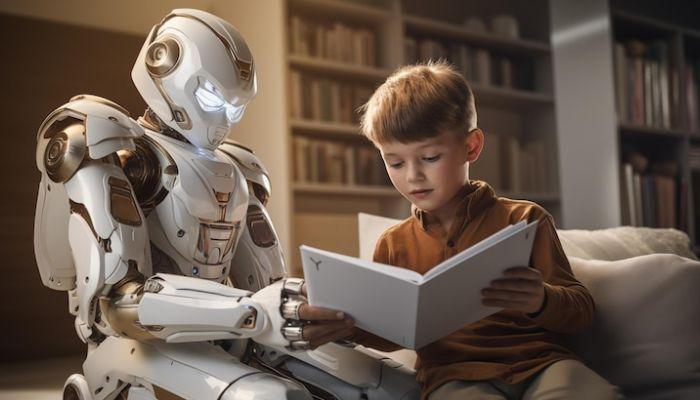Inspired by acclaimed Studio Ghibli, Ghibli Art has enchanted audiences across the globe with its unique, hand-drawn style. In the era of mid-journey and stable diffusion, art generation tools like Ghibli Art AI ChatGPT are changing the game for users who are trying to generate beautiful art. But while this technology opens wellsprings of creativity, it can also escalate fears of copyright infringement, ethical implications, and the responsible use of AI. To understand why Ghibli’s art safety is essential , AI-generated artwork must play nice with laws about intellectual property rights, artistic integrity, and ethical guidelines.
Understanding Ghibli Art in AI and ChatGPT
What Is Ghibli Art?
Studio Ghibli is known for Amazing Landscapes and hand-drawn animation with emotionally compelling storylines. Figurative elements in Ghibli’s Art are instantly recognizable due to the delicate brushwork, colourful palettes, and whimsical character designs. Many artists and AI tools attempt to replicate this unique style, leading to the rapid rise of Ghibli AI applications.
How AI Tools Like ChatGPT Generate Ghibli-Style Art
AI Tools, such as ChatGPT, apply deep learning techniques to create images from text descriptions. With a few clicks, users can forge Ghibli- inspired landscapes, magical environments and portraits of characters. Despite the exciting prospects of this AI-generated creativity, it comes with severe risks in regard to authenticity, credit, and the ethical applications of AI.
Also Read: Top 10 AI-Powered Mobile Apps You Need to Try Today
Why Is Ghibli Art Safety Important?
1. Copyright and Legal Concerns
Potential copyright infringement is one of the main issues raised by Ghibli Art AI ChatGPT. Studio Ghibli owns the artistic rights to its works, and as such, AI-generated replicas can brush up against the line between inspiration and outright copyright violations. Copying Ghibli-style art without permission can lead to legal issues, mainly if it is used for commercial use.
2. Ethical Considerations in AI-Generated Art
AI-generated Ghibli-style art seldom carries the human craftsmanship and storytelling depth; however, hand-drawn Ghibli is known for. This raises ethical questions about using AI models that lack the proper credits to the original artists and are trained on copyrighted material without permission. The responsible use of AI-generated Ghibli Art is to confirm that it is a tribute, not an infringement.
3. Risk of Fake or Misleading Content
The growing availability of Ghibli AI tools also opens the door to misinformation. AI-generated art could mislead fans and consumers by being falsely attributed to Studio Ghibli. Additionally, digital forgeries could be used unethically in marketing, gaming, and social media, further complicating the issue of authenticity.
4. Impact on Human Artists and Original Creativity
Under this scenario, Ghibli-style artists whose hand-drawn work resembles Ghibli animation may face difficulties as AI productivity increases. Human artists could struggle to get recognized and compensated if AI tools overtake the market. Fostering ethical use of AI means making sure these tools help artists, not replace them.
5. Quality Control and AI Limitations
While AI may be generating stunning Ghibli-style imagery, it still lacks any of the subtle artistry, warmth or flaws that make hand-drawn illustrations so special. AI-generated art can sometimes lead to bizarre results, like questionable human anatomy or awkward arrangements. Without human artists curating and polishing the AI output, the result typically is not even close to quality.
6. Data Privacy and Security Risks
There may be privacy and security issues linked to using AI tools for Ghibli Art AI ChatGPT. Data can be abused if AI platforms misuse it, as some of them collect user data. Also, some of the most notorious types of AI-generated art could be used to violate privacy laws or protocols like deepfake applications. Performing research on how to properly use AI while typically being familiar with data protection policies and tools’ guidelines is one of the methods to use AI safely.
Is Ghibli Art Safe to Use in AI?

The Ghibli users often ask, “Is Ghibli safe to use? Whether or not it is the answer depends on how one creates and circulates Ghibli-style works using AI. Some key components in making sure these things are safe and used responsibly are:
- Use Licensed and Free Resources
AI content should not pay to utilise content protected by copyright. Make sure that the materials you are using, be they training datasets or reference images, can be assumed to be legally available to the public. - Give Proper Credit to Original Artists
If your Studio Ghibli-inspired AI-generated artwork, acknowledge the original creators. Include your source page wherever applicable and respect their artistic legacy. - Do Not Commercialize AI-Generated Ghibli Art
There have been legal issues lately, especially regarding selling or profiting from AI-generated doujin of Studio Ghibli-styled work without official authorization. At that point, it may be used for profit as well as individual art consumption, but to stay in compliance, use not such art in a commercial format. - Utilize AI Art for Personal or Educational Projects
AI-generated Ghibli-style artwork is most appropriate for non-commercial uses, such as fan art, academic study, creative search, or learning aids. Share that experience with you but within the parameters of law.
Best Practices for Using Ghibli Art AI in ChatGPT

Best Practices for Ethically and Safely Using Ghibli Art ChatGPT Tools:
- Create Unique Interpretations
Instead of trying to mimic Studio Ghibli’s classic style, AI can be used as an aid to create new, uniquely imaginative interpretations that evoke its spirit. Literally, inject your artistic vision in order to make such work your own. - Follow Copyright and Intellectual Property Laws
This includes not heavily replicating or imitating Ghibli’s copyrighted designs in AI-generated artwork. So, don’t keep doing that; go for their artistic approach, but use your style that does not violate intellectual property. - Verify AI Model Training Data
The AI model you’re using has been trained on data sourced and used lawfully and ethically. To maintain moral correctness, do not make art based on illicit or unlicensed material. - Be Transparent About AI Content
Be upfront — you should always disclose when an artwork is generated via AI so there is no confusion or false attribution to Studio Ghibli. Ethical disclosure fosters trust and gives credit where credit is due. - Encourage AI-Human Collaboration
AI augments human creativity and does not replace it. Think of AI as a brainstorming partner, taking what it produces, running it through your artist filter, and mixing old pushes and new magic to create amazing art. - Follow AI and Copyright Regulations
Copyright law, as it relates to AI, is an area of rapid evolution. Staying compliant and contributing to a world of creativity devoid of copyright conflicts round up your Artistic AI endeavours.
Also Read: Perplexity AI: Revolutionizing Search and Beyond
Future of AI and Ghibli Art: What’s Next?
The conversation regarding AI-generated art and protection will only escalate as the tech continues to evolve. Regulatory frameworks may emerge to safeguard original artists and prevent unethical AI usage. At the same time, AI may act as a partner in the animation industry, assisting artists to develop their art rather than usurping manual methods of practically drawing a cartoon.
It will be an exciting future for Ghibli AI, but one that also wears the mantle of ethical responsibility. Users are able to explore creative possibilities while ensuring that their work is free from IP theft and that industry integrity is maintained with AI tools that respect intellectual property and artistic heritage.
Conclusion
Ghibli’s Art is a precious artistic style that inspired millions. It is essential to treat these kinds of tools responsibly before widespread application as they are already able to create Ghibli-style images. This recognition is significant in preserving Ghibli Art’s safety, maintaining artistic integrity, compliance with copyright laws, preventing the inappropriate use of materials based on AI and ensuring that by keeping with the best practices, creatives can still enjoy the magic of Ghibli Art AI ChatGPT but with more ethical and responsible creativity in the digital age



